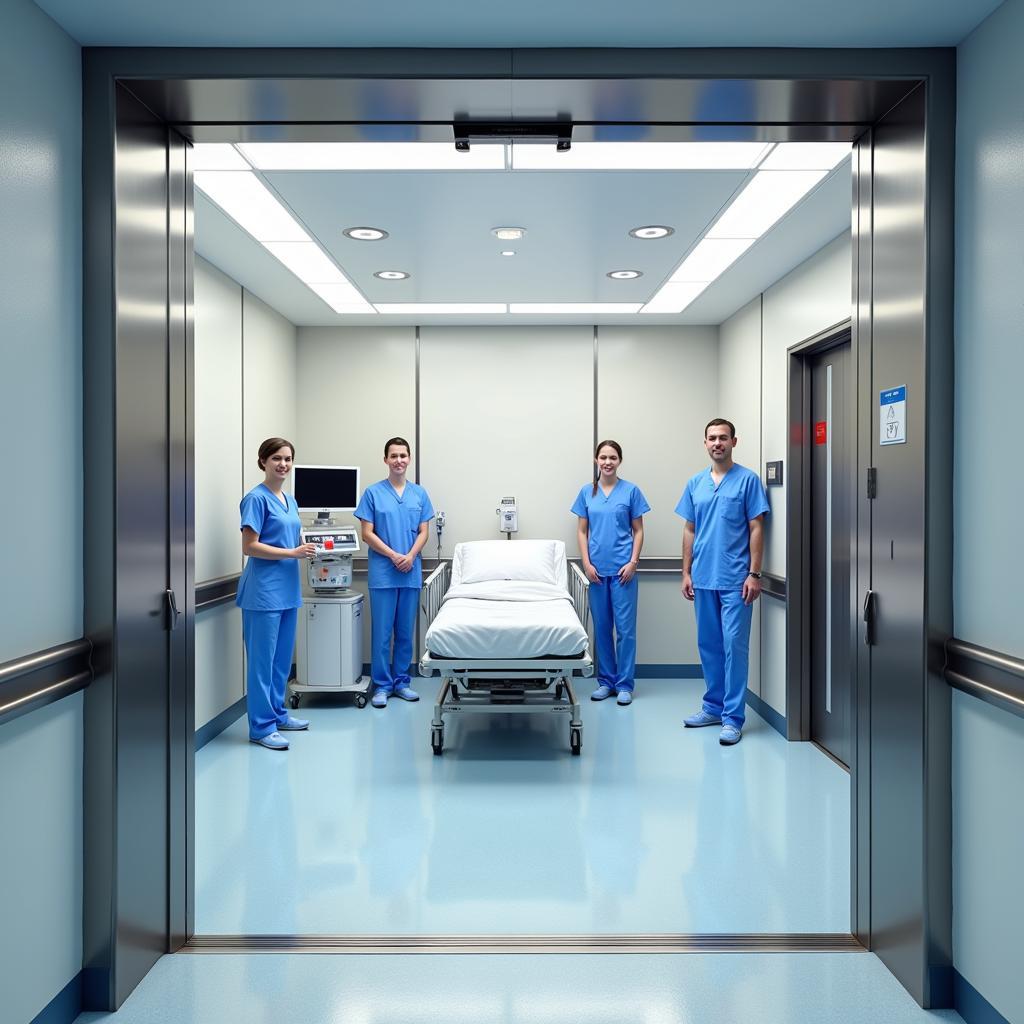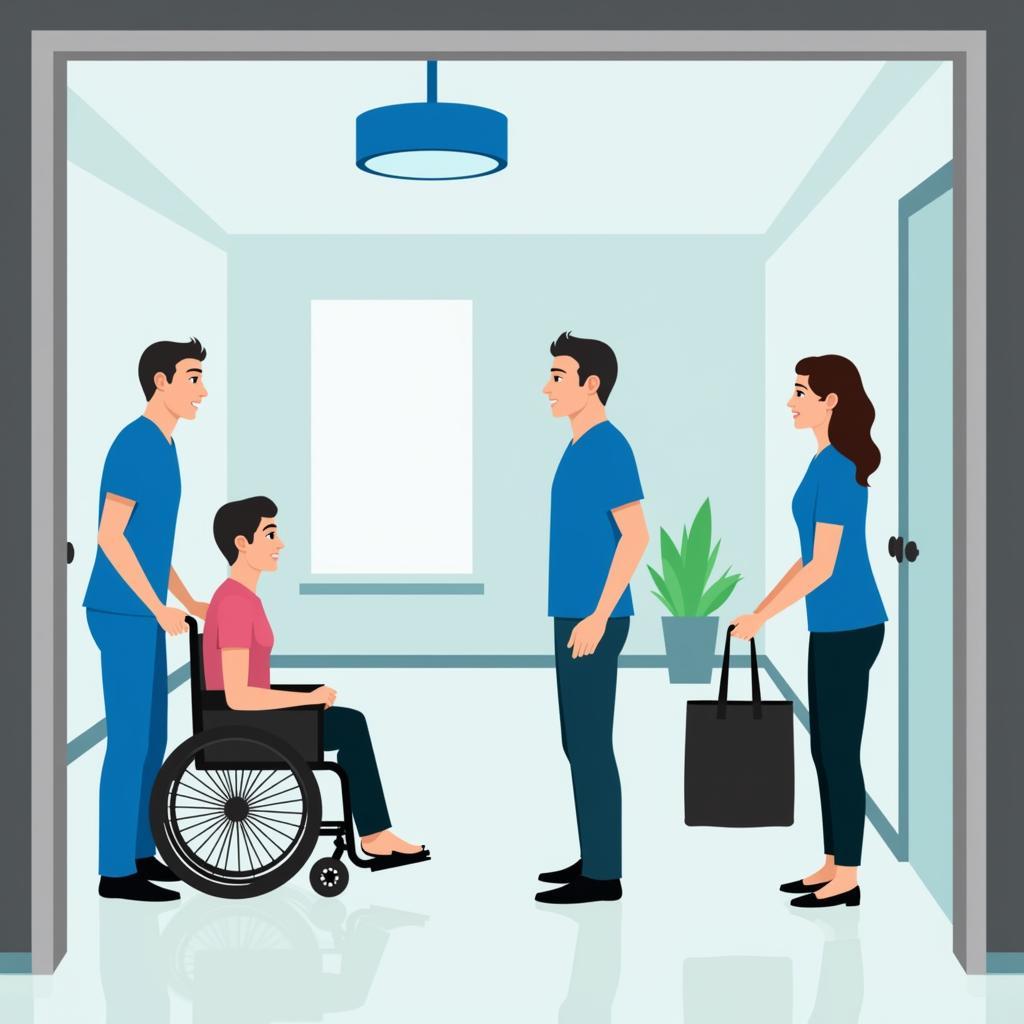The Hospital Elevator. A seemingly mundane element of a larger medical facility, yet it holds a unique significance. It’s a conduit between floors, a temporary haven for patients, families, and staff alike, all sharing the common experience of a hospital visit. But how much thought do we really give to this ubiquitous metal box that silently whisks us between departments and floors?
More Than Just a Ride: The Importance of Hospital Elevators
While it might seem obvious, hospital elevators play a crucial role in the smooth functioning of any medical facility. They are the unsung heroes that facilitate:
- Patient transport: Efficient and safe transportation is paramount for patients, especially those with mobility issues or critical conditions.
- Staff movement: Doctors, nurses, and other medical professionals rely on elevators to move swiftly between departments, ensuring timely care and consultations.
- Equipment transfer: From bulky medical equipment to essential supplies, elevators ensure the seamless flow of resources throughout the hospital.
 Hospital Elevator Transport
Hospital Elevator Transport
Understanding the Different Types of Hospital Elevators
Not all elevators are created equal, especially in a hospital setting. You’ll likely encounter various types, each designed for specific purposes:
- Passenger Elevators: The most common type, used by patients, visitors, and staff for general movement between floors.
- Bed Elevators: Larger elevators specifically designed to accommodate hospital beds, medical equipment, and staff accompanying patients.
- Service Elevators: Primarily used for transporting food, linens, medical supplies, and waste, separating these logistical operations from patient and visitor traffic.
Hospital Elevators and Accessibility: A Priority for All
For patients and visitors with disabilities, hospital elevators are more than a convenience; they’re a lifeline. Modern hospitals prioritize accessibility features, ensuring that elevators are equipped with:
- Braille buttons and audible announcements: Assisting visually impaired individuals in navigating the elevator.
- Low-positioned buttons and handrails: Providing ease of access for wheelchair users and those with mobility challenges.
- Spacious interiors: Allowing ample space for wheelchairs and mobility aids to maneuver comfortably.
Hospital Elevator Etiquette: Navigating the Space with Respect
Hospitals are places of healing, and a little consideration goes a long way in creating a positive and respectful environment for everyone. Here are a few elevator etiquette tips:
- Give Priority to Patients: Allow those in wheelchairs, on crutches, or using other mobility aids to enter and exit the elevator first.
- Be Mindful of Capacity Limits: Avoid overcrowding, especially in smaller elevators.
- Keep Conversations Respectful: Remember that you are in a healthcare setting. Keep conversations low and avoid discussing sensitive medical information.
- Offer Assistance: If you see someone struggling with a heavy bag or needing help with the elevator buttons, offer a helping hand.
 Respectful Elevator Use in Hospitals
Respectful Elevator Use in Hospitals
Beyond Function: The Role of Design in Hospital Elevators
The design of hospital elevators has evolved significantly, moving beyond pure functionality to incorporate elements that promote a sense of calm and well-being.
- Soothing Colors and Lighting: Soft, calming colors and gentle lighting are used to create a more relaxing atmosphere, minimizing stress and anxiety for patients.
- Music and Art: Some hospitals incorporate soothing music or artwork within the elevators to provide a welcome distraction and create a more pleasant experience.
The Future of Hospital Elevators: Innovation and Technology
As technology advances, hospital elevators are becoming even more sophisticated:
- Destination Dispatch Systems: This technology groups passengers traveling to nearby floors, optimizing elevator traffic flow and reducing wait times.
- Security Features: Integrated security systems, including cameras and access controls, enhance safety and security for patients, staff, and visitors.
- Touchless Technology: In a post-pandemic world, touchless buttons and voice-activated controls are becoming increasingly common, promoting hygiene and infection control.
In Conclusion: A Momentary Journey with a Larger Impact
While the hospital elevator might seem like a fleeting part of your visit, its impact on patient care, staff efficiency, and overall hospital functionality is undeniable. By understanding the different types, prioritizing accessibility, practicing respectful etiquette, and embracing innovative designs, we can all contribute to a more positive and efficient hospital elevator experience.
For any questions or assistance during your visit, please do not hesitate to contact our 24/7 helpdesk at Phone Number: 02437655121, Email: [email protected] Or visit us at: 298 Cau Dien Street, Minh Khai, Bac Tu Liem, Hanoi, Vietnam. We are here to help.